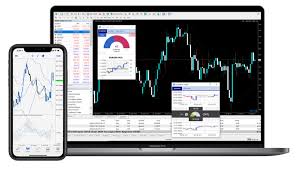For those exploring the financial markets, understanding the distinction between CFD Trading and stock trading is essential. Both offer opportunities to investors, but the way they operate, the associated risks, and the potential rewards greatly differ. Knowing these differences can help traders decide which approach aligns best with their financial goals and risk tolerance. This article will break down the key differences between CFD trading and stock trading to make it easier for you to choose your path.
What Is CFD Trading?
A Contract for Difference (CFD) is a derivative product that lets traders speculate on the price movement of assets without actually owning them. Assets can include stocks, indices, commodities, forex, and cryptocurrencies. When trading CFDs, you enter into a contract with a broker to exchange the difference in an asset’s price between the time you open and close the trade.
Key Features of CFD Trading
• Flexibility to Go Long or Short
With CFDs, traders can speculate whether the price of an asset will rise (long position) or fall (short position). This means potential opportunities in both bullish and bearish markets.
• No Ownership of Assets
Unlike stock trading, CFD traders never own the underlying asset. This makes CFDs efficient for speculative purposes but means that traders don’t benefit from dividends or voting rights tied to shares.
• Margin Trading
cfd trading typically requires only a fraction of the total asset’s value as margin, allowing traders to open larger positions than they would in traditional markets.
What Is Stock Trading?
Stock trading involves buying and holding shares of publicly listed companies. When you purchase a stock, you become a partial owner of the company and stand to benefit not only from price appreciation but also from dividends (if offered).
Key Features of Stock Trading
• Ownership
When you buy stocks, you own a portion of the company. Ownership comes with certain rights, such as voting on corporate decisions and receiving dividends.
• Long-term Investments
Stock trading often appeals to investors seeking sustained, long-term growth by holding shares of companies they believe will perform well over time.
• Direct Market Access
Stock traders generally deal directly on stock exchanges, either individually or through brokerage firms.
Differences Between CFD Trading and Stock Trading
Ownership
• CFD Trading: Offers exposure to price movements without owning the actual asset.
• Stock Trading: Provides ownership of the underlying company’s shares.
Financial Commitment
• CFD Trading: Requires a smaller upfront margin, making it cost-effective for short-term speculation.
• Stock Trading: Typically demands the full value of the shares, reflecting a larger initial investment.
Market Scope
• CFD Trading: Covers a wide range of markets, including commodities, currencies, indices, and stocks.
• Stock Trading: Focuses exclusively on company shares listed on stock exchanges.
Duration of Trades
• CFD Trading: Tailored for short-term trading; positions are often closed within the same day or within a week.
• Stock Trading: Suitable for long-term investment strategies, potentially lasting years.
Dividends and Other Privileges
• CFD Trading: Traders don’t receive dividends or participate in corporate voting.
• Stock Trading: Shareholders may earn dividends and get voting rights.
What Should You Choose?
Choosing between CFD trading and stock trading largely depends on your trading objectives, financial resources, and investment strategy.
• Go for CFD Trading: If you’re looking for flexibility, access to diverse markets, and opportunities to profit in both rising and falling markets.
• Stick with Stock Trading: If your goal is long-term value creation and you’re interested in owning a tangible stake in companies.
CFD Trading vs Stock Trading: What’s the Difference?
